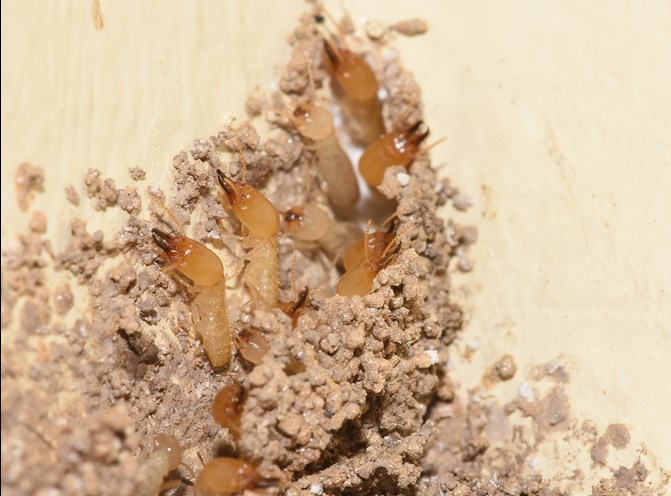
Termites are commonly known as ‘silent destroyers’ as they have the capacity to destroy your house and any wood in it. Termite Control in Jaipur helps in correct identification of termites as it’s crucial for effective termite control.
The key to the identification of various types of termites lies in understanding their behavioural pattern, type of wood damage, differences in its species.
Dampwood Termites
As the name suggests Dampwood termites like to feed on very moist wood. They need lots of moisture for survival. Hence, they usually live in dying wood or in houses with leaky plumbing that makes wood wet.
They are normally larger in size than other termite species. Dampwood colonies don’t have workers. Younger termites called “false workers” do all the work for the colony.
They do not carry disease and don’t usually bother buildings because there is not enough water in the wood.
Drywood Termites:
As the name suggests, Drywood termite colonies are usually found in dry wood. They do not require moisture or contact with the soil. They eat wood, wallpaper, plastics and fabric made from plants.
They form colonies of up to 2,500 members. Similar to Dampwood termites, younger termites, called “false workers”, do all the work for the colony. They tend to build nests and dig tunnels in buildings. These tunnels cause major damage because the wooden support beams become weak causing the building to lean or fall down.
Formosan Termites
Formosan termites are the most destructive species of subterranean termites as they form the largest colonies of any species. These colonies can contain millions of termites and can cause extensive damage in very short periods of time. They eat wood and fabric made from plants.
Formosan termite colonies can be up to 300 feet long and are divided into three groups: workers, soldiers and reproductive. They build cartons that bring moisture to their nests. This ability allows them to build nests without having to return to the soil for moisture like subterranean termites. They live in huge underground colonies and build mud nests inside the walls of a building or boats.
SUBTERRANEAN TERMITES
Subterranean termite colonies can have up to 2 million termites.
They eat wood, wallpaper, plastics and fabric made from plants.
They need contact with the soil to survive. They live in underground colonies or in wet areas aboveground. They build tunnels to reach food and every spring, groups of reproductive termites fly off to start new colonies.
They begin their damage from the ground up and enter a building through the sub-structure. They can destroy building foundations, wooden support beams, plastic plumbing pipes, sub-flooring and even insulation. They can also injure or destroy living trees and shrubs.
General Precautions for Prevention of Termite Infestation:
1.Make sure water drains away from your house so to prevent its accumulation around your home’s foundation. There shouldn’t be any moisture sources in and around the house.
2.It’s advisable to check any wood you bring home for termite infestation.
3.Check for signs of termites, such as bubbling paints, mud tubes and wood that sounds hollow when tapped.
4.Seal all cracks and crevices around the outside of your home to prevent Drywood termites from making tunnels within your house structure
5.Make sure there is no damp or damaged or dry wood in and around your house.
Since termites are difficult to detect at early stage, it’s advisable to contact professionals like Pest Control Services for immediate identification as precautionary measure.